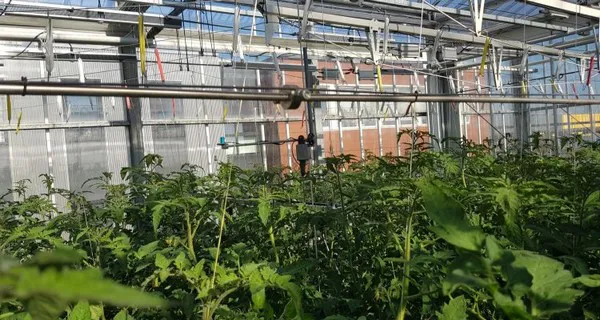A Digital Twin is a real-time computer simulation of, for example, a growing crop. This means that a grower can calculate the effect of a cultivation measure and later decide whether or not to actually take that measure. Developing such a Digital Twin requires a number of things, such as a good simulation model and many sensors in the greenhouse. The Greenhouse Horticulture and Flower Bulbs Business Unit of Wageningen University & Research recently fully equipped a research location with tomatoes in Bleiswijk with sensors.

As part of the project 'Digital Twins for decision support in tomato cultivation,' a 3D simulation of the greenhouse and crop is being developed. Before the computer model can be used for decision support, it must first be validated. This is achieved through a large number of sensors for measuring, amongst other things, the climate, plant weight, weight of the substrate, head thickness, sugar content in the leaf, evaporation, and temperature. WUR uses standard equipment and hyperspectral and stereovision cameras, as well as AI for image processing.
The sensors pass on the data to the computer model in real-time. The weight of the plants is measured every 5 minutes. To ensure robust data, the sensors must be optimally placed in the greenhouse. The speed of the connection must be taken into account (many sensors need 4G to transmit data), as well as possible obstacles that can disrupt the connection and a lot of server space.
All sensors have now been installed. This means that the computer model can be filled with cultivation data in the coming period. The advantage of this is that the model can then support cultivation decisions that are well-attuned to the crop situation. The tomato variety Marinice is used in the trial. WUR is also researching Digital Twins in cucumber and chrysanthemum cultivation.
Source: wur.nl
